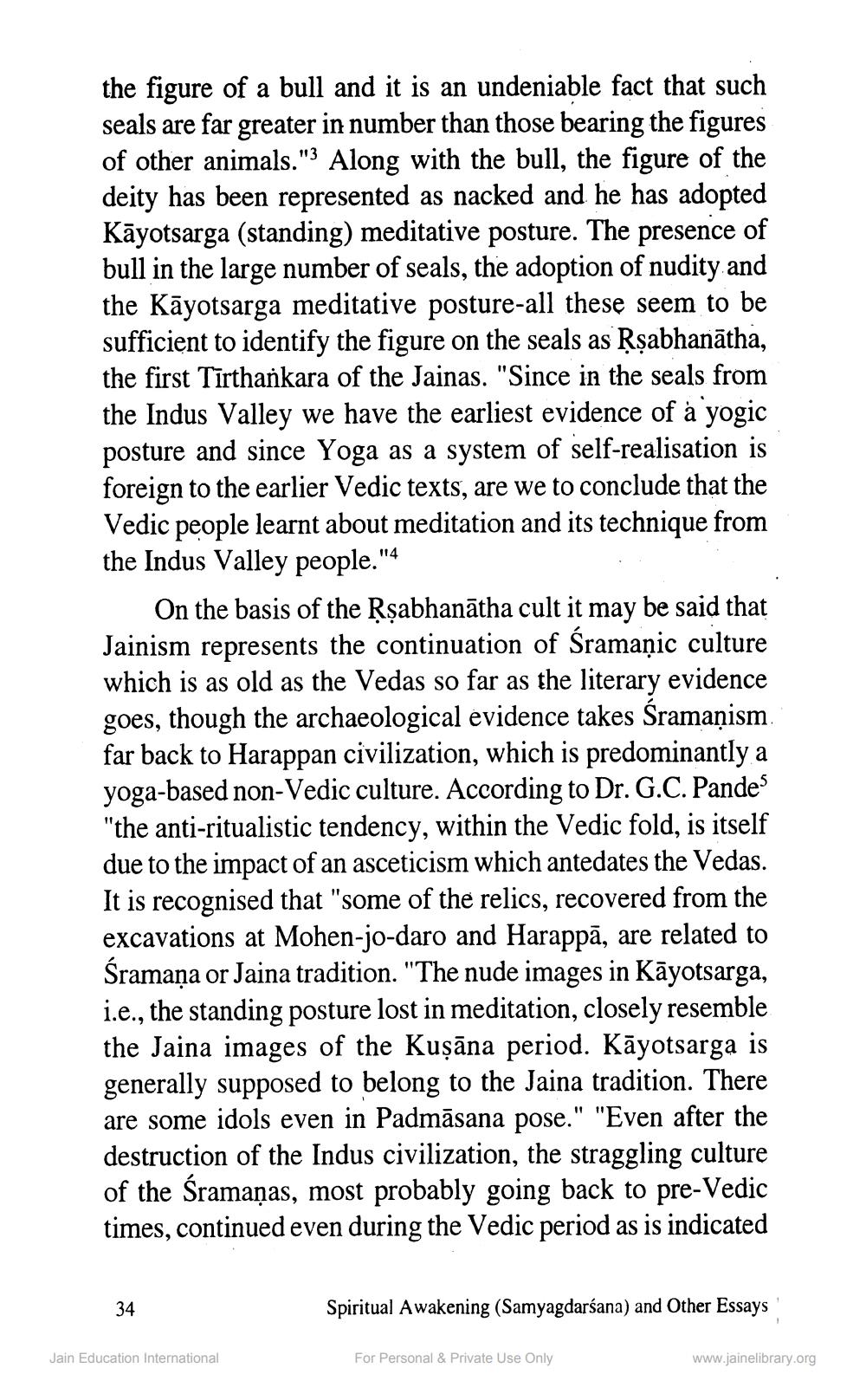________________
the figure of a bull and it is an undeniable fact that such seals are far greater in number than those bearing the figures of other animals."3 Along with the bull, the figure of the deity has been represented as nacked and he has adopted Kāyotsarga (standing) meditative posture. The presence of bull in the large number of seals, the adoption of nudity and the Kāyotsarga meditative posture-all these seem to be sufficient to identify the figure on the seals as Ķşabhanātha, the first Tīrthařkara of the Jainas. "Since in the seals from the Indus Valley we have the earliest evidence of a yogic posture and since Yoga as a system of self-realisation is foreign to the earlier Vedic texts, are we to conclude that the Vedic people learnt about meditation and its technique from the Indus Valley people."4
On the basis of the Rşabhanātha cult it may be said that Jainism represents the continuation of Śramanic culture which is as old as the Vedas so far as the literary evidence goes, though the archaeological evidence takes Śramanism. far back to Harappan civilization, which is predominantly a yoga-based non-Vedic culture. According to Dr. G.C. Pandes "the anti-ritualistic tendency, within the Vedic fold, is itself due to the impact of an asceticism which antedates the Vedas. It is recognised that "some of the relics, recovered from the excavations at Mohen-jo-daro and Harappā, are related to Śramaņa or Jaina tradition. "The nude images in Kāyotsarga, i.e., the standing posture lost in meditation, closely resemble the Jaina images of the Kuşāna period. Kāyotsarga is generally supposed to belong to the Jaina tradition. There are some idols even in Padmāsana pose." "Even after the destruction of the Indus civilization, the straggling culture of the Sramaņas, most probably going back to pre-Vedic times, continued even during the Vedic period as is indicated
34
Spiritual Awakening (Samyagdarśana) and Other Essays
Jain Education International
For Personal & Private Use Only
www.jainelibrary.org




